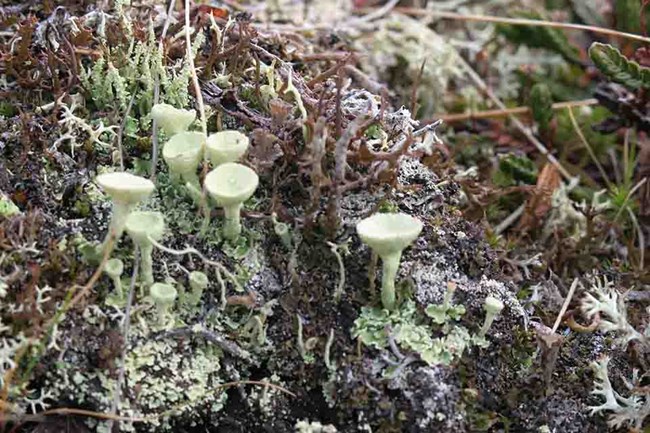Last updated: April 5, 2018
Article
Lichens as Indicators

Lichen traits and species as indicators of vegetation and environment
Abstract
Lichens in the Arctic play important ecological roles. They also face the threats of increasing fire and shrub and tree expansion, exacerbated or caused by climate change. These forces may lead to changes not only in lichen community composition but also in the abundance, diversity and distribution of lichen functional traits. We sought to connect landscape-scale patterns of lichen community composition and traits to environmental gradients to both monitor lichen communities and clarify community-trait-environment relationships. We measured lichens throughout one of the largest and most remote U.S. National Parks within the Arctic. We then analyzed lichen community composition and species richness within ecologically informative lichen trait groups along environmental and vascular vegetation gradients. Macrolichen species richness in 0.4 ha plots averaged 41 species with a total landscape level observed gamma diversity of 262 macrolichen species. Jackknife estimators placed the landscape level macrolichen diversity at 307 to 331 species. A gradient from low-elevation forests to high elevation rocky areas was the dominant ecological gradient as expressed by the lichen community, representing 68% of the variation in species composition. Low-elevation forests hosted more epiphytic lichens characteristic of boreal forests, whereas high-elevation lichen communities were characterized by saxicolous lichens, varying between siliceous, basic or mafic rock types. Along this gradient, species reproducing vegetatively and lichens with filamentous growth form were more frequent in forests while the diversity of traits was highest in alpine habitats. Simple cladoniiform, as opposed to erectly branched fruticose lichens in the genus Cladonia, were the only functional group associated with tussock tundra. Vegetation types differed significantly in lichen species composition and richness and trait richness; characteristic suites of lichen species and traits are associated with the particular vegetation types in the Arctic. We also extended the range of Fuscopannaria abscondita reported new to North America and Zahlbrucknerella calcarea new to Alaska.
Nelson P. R., B. McCune, and D. K. Swanson. 2015. Lichen traits and species as indicators of vegetation and environment. The Bryologist 118(3):252-263.
